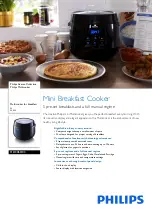
19
Smeared mill stones
If the grain is not dry enough for the fineness chosen, the millstones may
become smeared. A hard smooth layer will form on the outside edge of the
stones. To clean the stones, milling 1 or 2 handfuls of rice at a coarse setting will
suffice. Any bonding will be removed. If necessary scrape this layer off the two
stones and clean the grooves on the stones. Eventually clean the flour spout
using a bristle brush or a vacuum cleaner
.
Cleaning the milling Chamber:
Due to functional reasons, when producing fine products a small residue of
flour will remain in the milling chamber. This small residue will be
removed if after your milling process you let the mill run at the coarsest
setting.
Should you be intending not to use your mill over a period of several
weeks, thorough cleaning of the milling chamber is recommended – this
especially for hygienic reasons. First mill a handful of either rice or grain
using a coarse setting. Open the mill and with a vacuum cleaner remove all
residue wheat from the milling chamber.
Important!
Never leave the mill open in parts (hopper and motor part
separate), but leave the whole mill ready for service. You will thus
avoid any possible deformation of the wooden parts due to humidity.
Against moths and insects:
Place a tea bag (herbal) in the flour spout. Put bay leaves in the upper and
lower parts of the mill.
Moths love dark conditions, where they can survive in peace and quiet! They
eat only flour and no wood. Provided your mill is frequently used, you will not
be offering moths a comfortable place to stay.










































